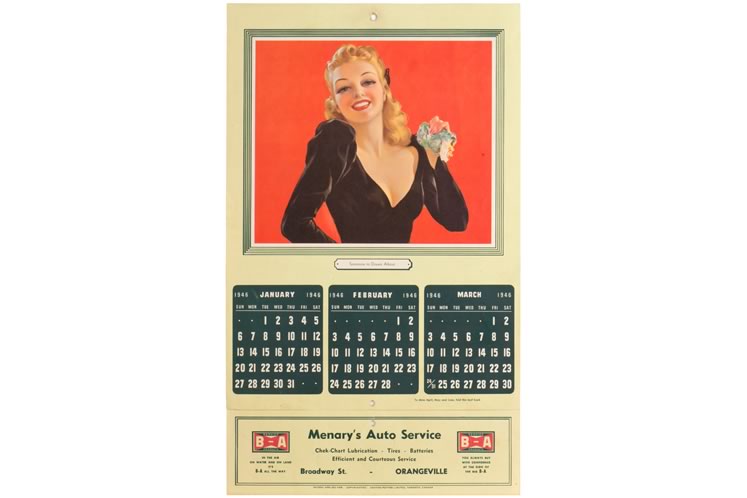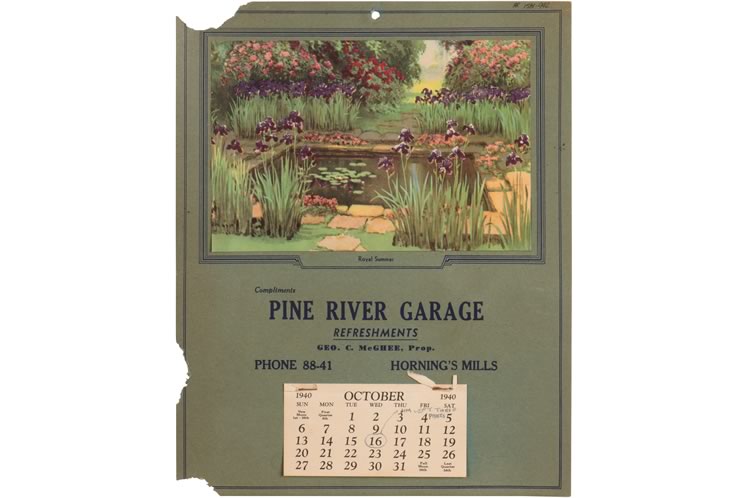Free Calendars at Christmas
Collecting calendars was once a seasonal ritual on main street.
At the turn of the past century, a number of local merchants here in the hills began offering wall calendars at Christmastime. Grand Valley clothier A.O. Taylor was one of the first off the mark, telling citizens he would give away a “beautifully engraved 1901 calendar” with any order for a suit ($15−$18). The same year, just up the street, T. H. Hamilton also offered calendars, but with a difference. His were neither engraved nor beautiful, but they were free for the taking, and “free” turned out to be a big hit.
The calendars were so popular that over the next few years, newspapers began to report which stores were offering free ones. By the end of the decade, the novelty had become the norm. In every town, village and hamlet, Christmas shoppers were picking up more calendars than they would ever use.
A payoff for the merchant
The ritual was a cost for the merchant, but it had a two-fold benefit. The first was ongoing promotion. Unlike newspaper ads or handbills, calendars hung in full view for a year, complete with a business’s phone number and often its service and product distinctions.
The second, more subtle benefit was goodwill. In its 1944 offering, the Bolton Dairy and Locker Storage Plant, for example, made sure its name and “Compliments of” stood out in bold print beneath a gentle nature scene. In rural communities, such calendars reminded customers their merchants were their neighbours. In turn, by hanging calendars in their homes, customers were indicating a touch of loyalty. The system worked for both sides.
A payoff for the customers
Wall calendars added a convenience many homes once lacked. To check a date it was easier to glance at the calendar picked up at S. T. Phoenix’s store in Shelburne than to dig through the Farmer’s Almanac. And the calendar had visual appeal. The picture on Phoenix’s 1945 calendar, for example, was a still life of flowers. As simple as it was, it provided some pleasing art on a kitchen wall at a time before art prints were widely available. When the ritual was at its height, it was not uncommon for a family to hang half a dozen or more calendars in their home.
The most attractive ones had staying power too. George Berney, former proprietor of his family’s hardware store in Caledon East, describes visiting the home of an elderly customer in Palgrave in the early 1970s and spotting a calendar from 1931 still hanging on a wall. An especially attractive image was often cut out and framed. A pastoral scene featuring a flock of sheep, for instance, offered by Orangeville miller Henry Watt in 1911, was allegedly preserved for years in parlours all over Mono and Amaranth townships.
As for the pictures …
Unlike today’s wall calendars, which often have full pages for each month, those early calendars had a single image with a pad of 12 tear-off months attached below. That made the choice of picture crucial, and most merchants opted for something pleasant and safe, like a child with a dog. Such an image appeared in the 1949 giveaway at E. G. Stewart’s shoe store in Bolton. Carole (Rowe) Whitehead, who still has a copy of this calendar, remembers seeing many just like it. She also remembers pictures with drama being popular.
“In the days before television,” Carole says, “if a picture made you wonder what was going to happen next, it could be interesting every time you looked at it.” Lang’s butcher shop in Orangeville offered a typical example in 1942 – a freeze frame of someone stepping out of a log cabin, encountering a mother bear and cub.
Another frequent image was tranquil mountain scenery, like that on the calendar offered by the Camilla Feed Mill in 1951. And ever popular (so sometimes unwittingly chosen by competing stores in the same year) was a smiling young woman with a horse – almost always a palomino – such as the calendar from Mono Centre general store in 1955. Pinups did appear occasionally, but they were seldom if ever offered at a main street store. For the most part, a merchant’s choice had to be suitable for a family’s kitchen wall.
An era come and gone
Although some businesses still mail out calendars, the heyday of the in-store giveaway had waned by the late 1970s. By then it was no longer routine for Christmas shoppers to trip along main street picking up free calendars from local merchants, in part because the main street they once knew was gone, replaced by box stores and shopping malls where Christmas sales, discounts and loyalty programs made free calendars pale by comparison.
It was also different at home. There were now multiple distractions for the mind and eye – far more than kitchen walls once offered. As for convenience, tapping a smartphone has become as quick as a glance at a wall calendar, and a second tap can embellish the process with news or trivia, or register the date for future reference.
Such developments more than replace the local merchant’s free calendar and the needs it fulfilled. They’re just not as neighbourly.
Some typical calendar offerings from local merchants
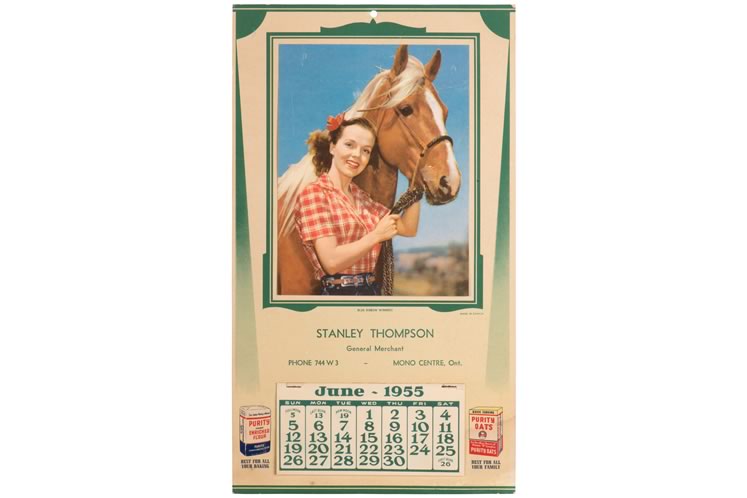
The image of a smiling young woman and a horse – most often a palomino as on this calendar from the Mono Centre general store – was always a reliably pleasing subject. Photo Courtesy Museum of Dufferin Archives.
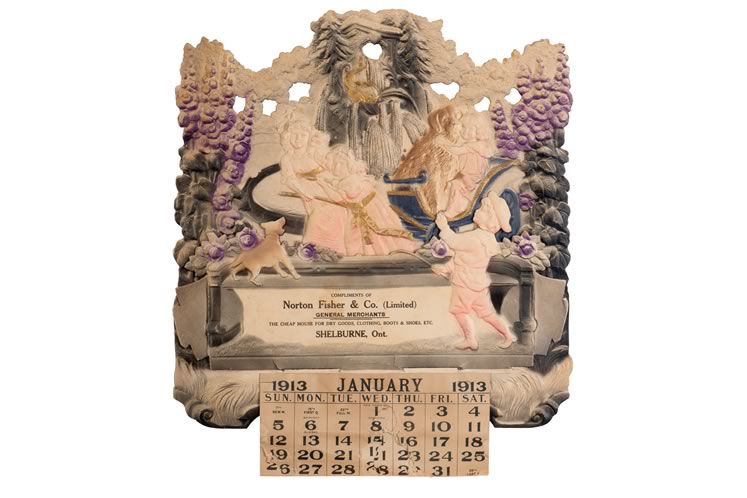
Elaborate 3-D, die-cut paper calendars were highly coveted, but too expensive for most merchants to give away. Nevertheless, this Shelburne dry goods purveyor went all out in 1913. Photo Courtesy Museum of Dufferin Archives.
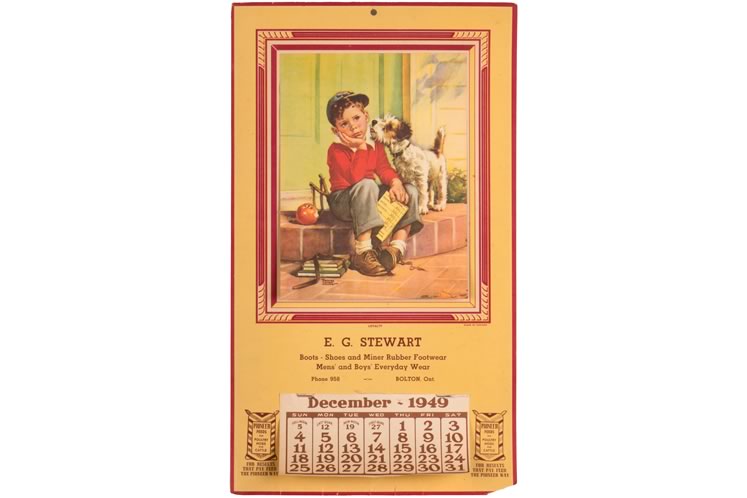
A boy and his dog, like this whimsical image on the calendar of a Bolton men’s and boy’s wear store, was also a surefire crowd pleaser. Courtesy Carole Whitehead.
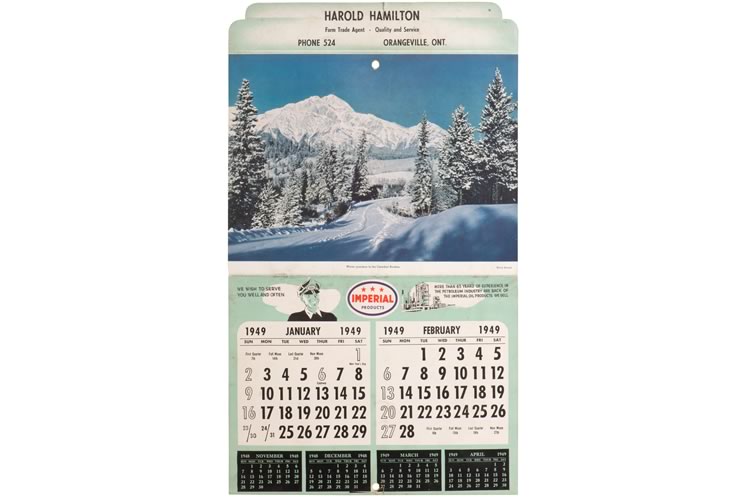
Scenes like this snowy mountain landscape added a touch of the exotic to rural Ontario kitchens. Photo Courtesy Museum of Dufferin Archives.
Related Stories
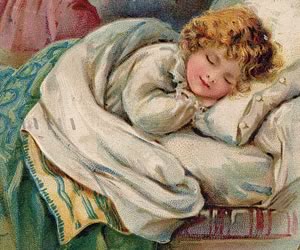
Was Christmas ever ‘Old-Fashioned’?
Nov 20, 2010 | | Historic HillsChristmas was once a simple season of carolling and school concerts, of neighbourly greetings and family visits, of tinkling bells and sleigh rides in gently falling snow, all blessedly free of commercial pressure. Well, maybe.
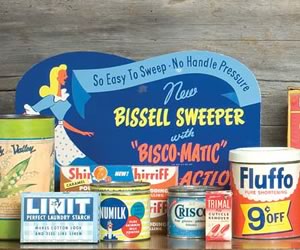
Yesterday’s Superstore: A Tribute to the Old General Store
Mar 23, 2008 | | HeritageIn the Waldemar store, pop was five cents in the 1940s (seven cents if you took it outside, but there was a two-cent bottle return).
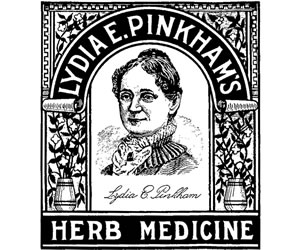
Medicinal Wonders?
Nov 18, 2008 | | Historic Hills“Why Die a Lingering Death of Direful Diabetes? Dodd’s Kidney Pills Cure It!”
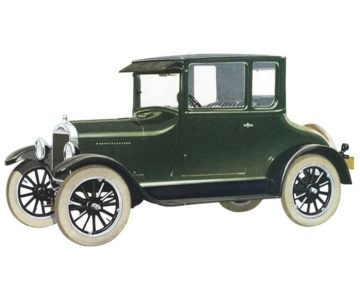
The Auto Takes Hold
Jun 22, 2021 | | Historic HillsIn less than two decades automobiles grew from curiosity to commonplace in these hills.





